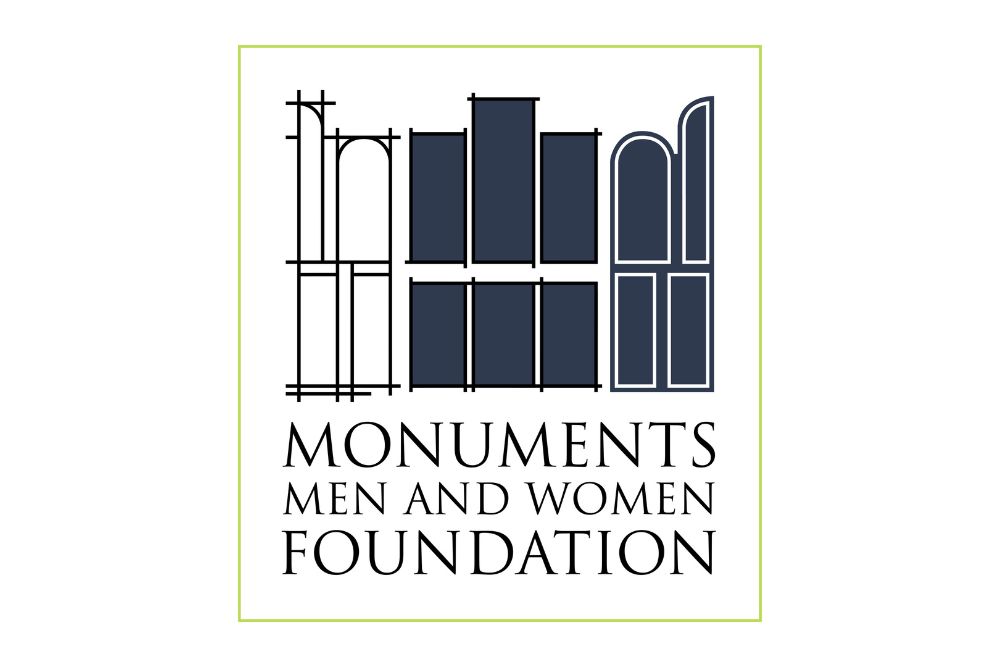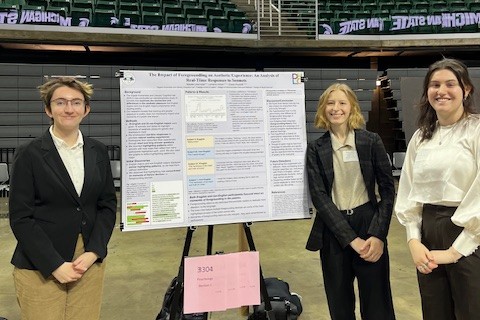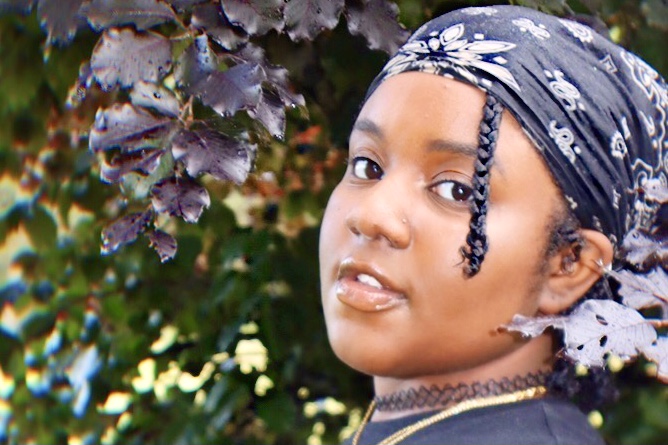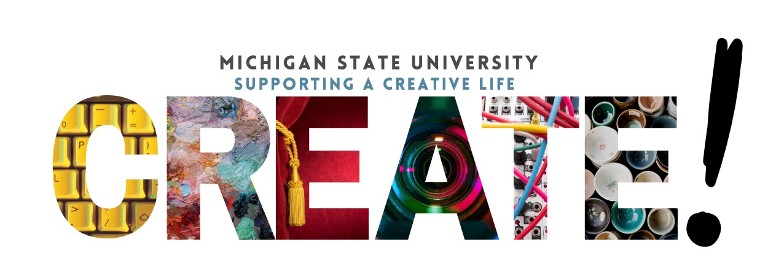On June 6, the 78th anniversary of D-Day, the Monuments Men Foundation for the Preservation of Art (Foundation) officially changed its name to the Monuments Men and Women Foundation to honor all the women who fought to rescue cultural treasures from theft and destruction during World War II. Along with this name change, a new logo was unveiled, which was designed by Grace Houdek, a recent Graphic Design graduate from Michigan State University.
“The Monuments Women, 27 in all, made an important contribution to the post-war restitution of almost 4 million stolen cultural objects,” said Anna Bottinelli, Foundation President. “Today, women are an integral part of the U.S. Army’s newly reconstituted cultural preservation force. Women constitute a majority of our Monuments Men and Women Foundation team. It is right and appropriate that we recognize those contributions by name.”
A central feature of the Foundation’s rebranding is its new logo designed by Grace Houdek, who was working as a member of Design Center at MSU when the Monuments Men Foundation approached the group for help with the logo redesign and rebranding.
“Our mission was to convey their story within a logo. They wanted to emphasize the importance of finding and restoring these works of art.”
Grace Houdek, recent Graphic Design graduate
The focus of the rebranding was twofold. First, the Foundation wanted to add women to the Foundation’s title to acknowledge the important role they have played – and continue to play. Second, to acknowledge the Foundation’s ongoing search for the hundreds of thousands of cultural artifacts that remain missing since World War II and its continuation of the mission of the original Monuments Men: to find and return these artifacts to their rightful owners.
“Our mission was to convey their story within a logo,” Houdek said. “They wanted to emphasize the importance of finding and restoring these works of art. If we want to pass these monuments down to future generations, it will require our communal effort to emphasize the importance of these works of art, as well as finding and restoring them.”
Run by Chris Corneal, Associate Professor of Graphic Design, Design Center at MSU, housed within the Department of Art, Art History, and Design, is composed of 12 select students from MSU’s Graphic Design program who are chosen for their creativity, dedication, and professionalism via a competitive application process each spring. The team collaborates with on-campus and off-campus groups to create client-based design solutions in a real-world agency-like environment.

“Following the early discussions with the client, the group of student designers and I debriefed to compare notes and take-aways from the meeting to more clearly focus problem definition,” Corneal said. “Each individual designer then ran with this problem definition to develop multiple concept directions. As a group, we met several times throughout the development stages to review progress and offer peer feedback.”
One of the first places Houdek turned to for inspiration was the Monuments Men movie.
“I had learned about the Monuments Men when the Monuments Men movie first came out in 2014, and I was fascinated by their story,” Houdek said. “So, when this opportunity came to Design Center to design their new logo, I went back and rewatched the movie, not only for inspiration but to also reignite my excitement for this topic.”
From there, Houdek reviewed a collection of photos provided by the Foundation. The photographs were taken in an Austrian salt mine where the Monuments Men unearthed a huge cache of stolen artwork. While looking through the photos, Houdek focused on picking out key visual elements that conveyed the story of the Monuments Men.
“I’m very excited Design Center was able to work on this important project and that we made the client happy as we delivered a very sophisticated and visually succinct mark that so successfully tells the layered and complex story of the Monuments Men and Women Foundation.”
Chris Corneal, Associate Professor of Graphic Design
“I was initially inspired by different styles of picture frames, the minecarts that were used to transport the recovered artworks from out of the mines, and the action of passing along artwork from one person to another, symbolizing recovery and restoration,” Houdek said. “Analyzing the visual references that were provided to us allowed me to discover various visual metaphors that resemble and symbolize the story and efforts of the Foundation.”
One major victory of the Monument Men and Women is the recovery of the Ghent Altarpiece, which is something that stuck with Houdek as she did her research. The Ghent Altarpiece is composed of a series of paintings that are divided into panels featuring figures like Adam and Eve, the Virgin Mary, and John the Baptist. Completed in 1432, the artwork has been stolen multiple times throughout the centuries, including in the 18th century when panels were taken by French troops to fill the Louvre in Napoleon’s French Empire. The artwork also was stolen by German troops during World War I. It was returned to Belgium following German’s defeat, only to be looted by Nazi Germany 22 years later during World War II. It was recovered from an Austrian salt mine by the Monuments Men and Women in 1945.
“The Ghent Altarpiece is considered to be one of the most stolen pieces of art in the world, having been stolen multiple times over the centuries. The Monuments Men are the last group of individuals to have recovered this work of art,” Houdek said. “Rescuing this highly coveted work of art emphasizes the importance of the efforts of the Foundation, as the Altarpiece now stands as a symbol for recovery and restoration.”

The total number of Altarpiece panels suggested in Houdek’s logo design, 14 in all, is a subtle, yet brilliant reference to the Monuments Men and Women of 14 nations who worked together to help rescue and protect cultural treasures throughout World War II.
The left-to-right design of the logo Houdek created represents art still missing, art that has been recovered, and ultimately art that has been returned to its rightful owners. One of the Altarpiece’s 14 panels remains missing to this day and it has been replaced with a copy for the time being – the art that has yet to be returned.
“That alone emphasizes the importance of looking and searching for these missing works of art, finding them, and restoring them,” Houdek said. “So, all these different historical aspects just further play into the role and the mission of the Monuments Men. I thought the whole thing symbolized the mission really well.”
The Monuments Men and Women Foundation, which had previously worked with a series of professional designers on the logo with no success, agreed.
“Rebranding can be a long and expensive process, so their dedication to this important step was immensely helpful, and Ms. Houdek beautifully captured the mission of the Foundation.”
Anna Bottinelli, Monuments Men and Women Foundation President
“The previous unsuccessful attempts by other professional designers clearly indicated to all of us that nothing short of excellence would meet the client’s needs,” Corneal said. “I’m very excited Design Center was able to work on this important project and that we made the client happy as we delivered a very sophisticated and visually succinct mark that so successfully tells the layered and complex story of the Monuments Men and Women Foundation.”
Kristen Mapes, Associate Director of Digital Humanities for Michigan State University’s College of Arts & Letters, is a Foundation Trustee and facilitated the collaboration between MSU’s Design Center and the Monuments Men and Women Foundation.
“I am grateful to Professor Corneal and our Trustee Ms. Mapes for opening the door to this collaboration,” said President Bottinelli. “Rebranding can be a long and expensive process, so their dedication to this important step was immensely helpful, and Ms. Houdek beautifully captured the mission of the Foundation.”
The logo redesign project was completed as part of Design Center coursework during the group’s last semester as MSU undergraduates.
“At first, it was crazy to think that they would contact us but getting to work one-on-one with them has been an honor,” Houdek said. “It has been such a great experience to work with such a monumental organization. They’ve been a pleasure to work with.”
Houdek’s outstanding work on the new logo landed her another opportunity to work with the Monuments Men and Women Foundation. They have asked her to design some of their new stationery as well.
“It’s been really exciting to continue that relationship,” Houdek said. “I’ve been designing some of their business cards and note cards and stationery. So that’s in the works at the moment.”
This is not Houdek’s only noteworthy achievement during her time at MSU. She also has received an Addy Award, is a recipient of the MSU Kuszai Graphic Design Scholarship, and is one of two MSU students showcased in the 2022 Graphic Design USA Students to Watch.
“MSU and the College of Arts & Letters have been fantastic in preparing us designers for real-world experiences, freelance opportunities, job interviews, and so on and so forth,” Houdek said. “The professors have been phenomenal and I kind of owe everything to them.”


